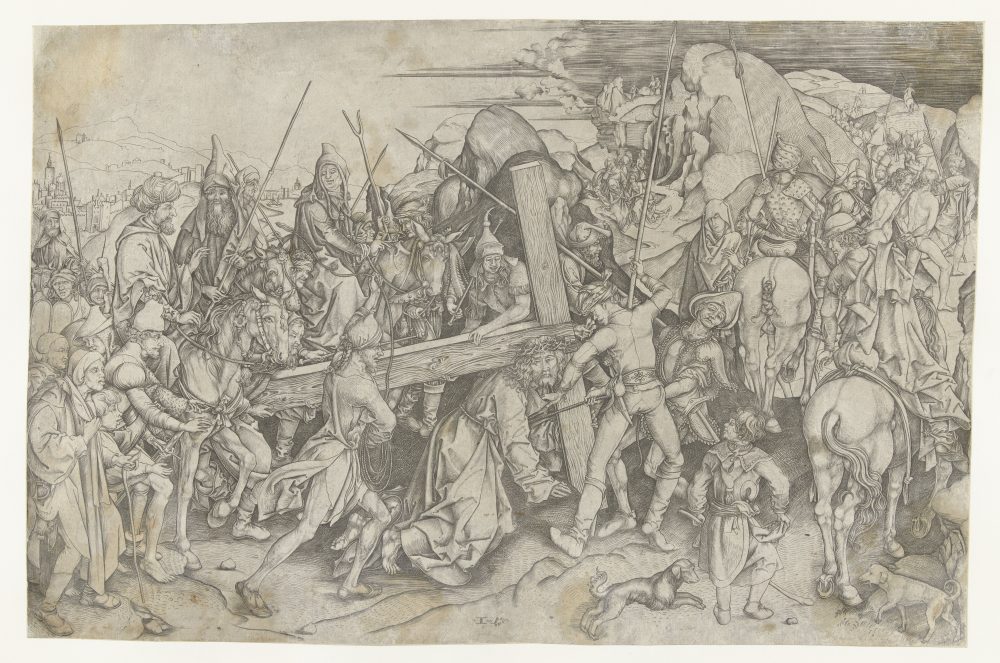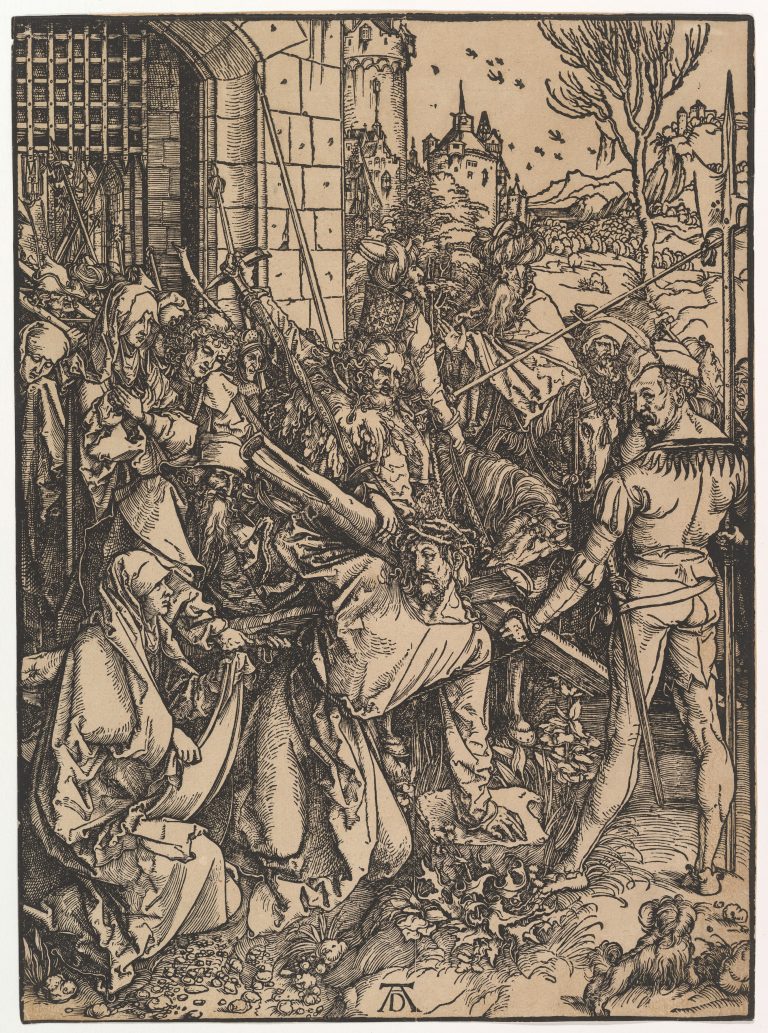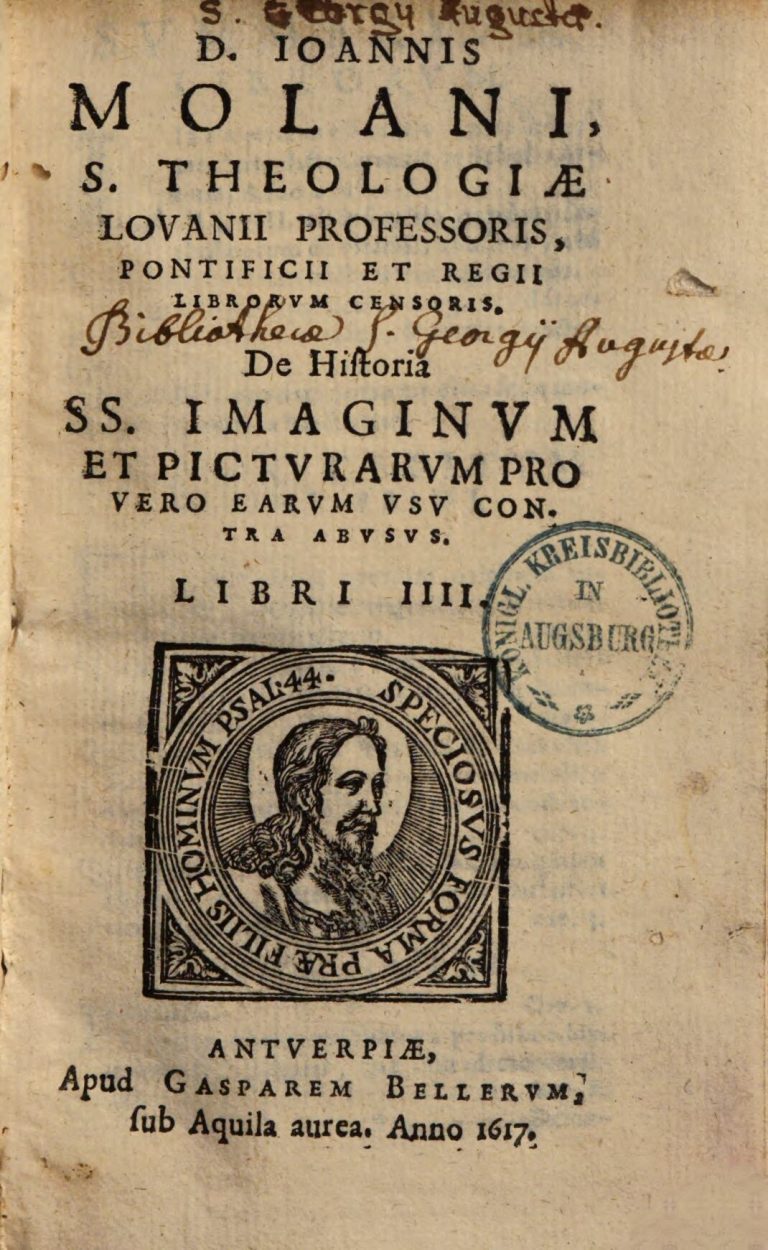
Rijksmuseum Amsterdam, http://hdl.handle.net/10934/RM0001.COLLECT.8165
In chapter 30 of book 2, Molanus examines a further matter regarding errors and whether they are dangerous errors and how to deal with them; this discussion goes on in the following chapter. The central position in this chapter is taken by errors that are not real errors even though they do not correspond to the Scriptures or the teachings of the Church. The problem lays often in the fact that there is no certainty in the Scriptures about the matter nor a univocal position among the commentators. The cases presented by Molanus in this and the following chapter are also often relatively popular depictions among the popular devotees, which requires an even more careful stance from the authorities. For Molanus in these cases, the most important aspect to consider is whether these errors still can be probable, because if so, he does not see a strong motive to adjust or abolish them.
The third example presented in this chapter regards the figure of Simon the Cyrenian who helped Christ carry the Cross on the Road to Calvary. The discussion centres around the question whether Simon took the Cross from Christ’s shoulders and Christ walked behind or that he took up the bottom of the Cross and Christ continued walking in front. Molanus examines the Bible itself as well as several commentaries and concludes that the second theory receives more approval and seems more likely to him since Christ never put the Cross down. However, since both interpretations are probable, there is no need to condemn paintings that depict Simon in front and Christ behind.
“Now let’s move from the first Adam to the second. We read in the account of the Lord’s Passion: they put a certain Simon of Cyrene in charge of the Cross, making him carry it after Jesus. This sentence does not give any certainty at all: does it mean that Simon carried the Cross with Christ by walking behind him, or that he carried the Cross by taking it from the shoulders of the weary Jesus? The second interpretation is favoured by Jerome in his commentary on chapter 27 of Matthew’s Gospel, by Leon in his eighth sermon on the Passion, and by Theopylact in the Evangelists. But the first explanation seems to be found in Ambrose in his commentary on chapter 23 of Luke’s Evangelist and is favoured by some later commentators. Thus, among them, Franciscus Polygranus says: ‘Lest he should lack strength, they compel this man to support the Cross behind him, not because they wish to unburden him completely, but because two carry more easily what is heavy for one. I am not at all convinced that Christ ever laid down this Cross, to the weight of which was added that of our faults.’ Therefore, since neither interpretation is to be blamed, and both are probable or at least not impossible, it follows that there is no need to disavow those ancient paintings where Christ walks in front carrying the foot of the Cross, nor those more frequent ones where, conversely, he carries the Cross while Simon of Cyrene supports its foot.”
“Et ut a primo Adam ad secundum transeamus. Habet Domincae passionis Historia, Imposuerunt Simoni cuidam Cyrenensi crucem portare post Iesum. Non est autem omnino certum, an hic significetur Simonem cum Christo tulisse crucem retro eundo, an vero signficetur post Iesum fatigatum, ablatam ab humeris eius crucem portasse. Posteriorem hanc sententiam amplexi sunt Hieronymus in 27. Matteo, Leo sermone 8. de Passione et Theophylactus in Evangelistas. Priorem vero expositionem videtur Ambrosius habere in 23. Lucas et quibusdam recentioribus magis arridet. Unde inter eos Franciscus Polygranus ait: ‘Ne ergo deficeret, hunc hominem adegerunt ferre crucem post ipsum. Non quod omnino exonerarint ipsum, sed quia facilius duo portant quod uni fuerat grave.’ Neutiquam certe persuasum habeo Christum, hanc crucem cui nostra adiunxerat crimina, vel unquam deposuisse. Cum ergo neutra sententia sit reprehendenda, utraque vero probabilis aut vero non absimilis, consequitur nec antiquas eas picturas reprehendendas esse, in quibus Christus pingitur crucem baiulare ante ferens caudam crucis. Nec etiam eas que nunc frequentiores sunt, ubi Christus inverso modo crucem fert, caudam crucis portante Simone Cyreneo.”


Lucas Matthew Theophylacte Franciscus Polygranus
Molanus 1996, 212.



